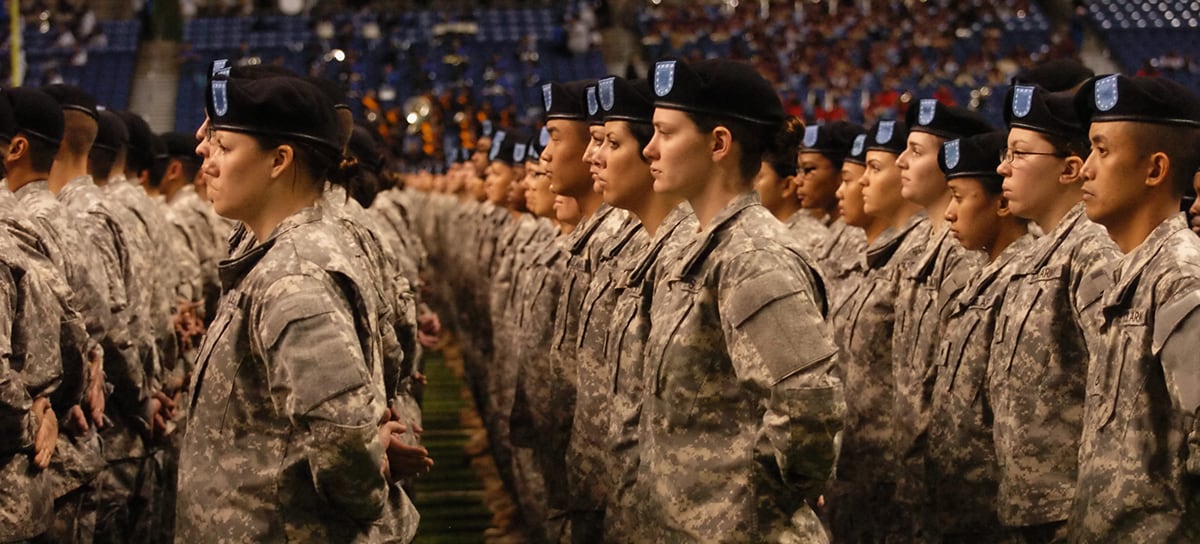WASHINGTON — The U.S. Army will not meet its mission to recruit 80,000 active duty soldiers this year and has officially lowered that goal. But Army leaders said the service has been able to encourage more experienced service members to stay on the job to satisfy a growing demand for troops.
Army Sgt. Maj. Daniel Dailey said Friday that the updated goal will be 76,500. Six months into the recruiting year, the service has brought in just 28,000 new soldiers.
Dailey said the goal is to grow the Army to 483,500, as approved by Congress, and it’s up to the Army whether to use more recruiting or re-enlistment. He said that retaining current soldiers has been more successful this year than in the past, with 86 percent staying on, compared with 81 percent in previous years.
RELATED

Army Secretary Mark Esper said there is a mismatch between the number of soldiers in the Army and the demand for more troops, and acknowledged that the “strong economy does make it challenging.” He said, however, that the Army will not sacrifice quality for quantity and that standards will not be lowered to meet recruiting goals.
The struggle to meet this year’s higher recruiting numbers — a significant increase over last year’s mission of 69,000 — was expected, mainly due to the favorable American economy and increased competition from private sector employers who are able to pay graduates more money.
RELATED

Maj. Gen. Jeff Snow, head of the Army’s recruiting command, predicted late last year that the higher enlistment goal would be difficult to meet, considering economic factors and the military’s need for recruits to pass strict physical testing that many young people can’t complete.
“This mission is going to be a significant challenge for the command,” he told The Associated Press in December. Meeting the increased mission this year, Snow said, could force the Army to take in more recruits who would require waivers for marijuana use, low test scores or other more basic health issues.
Asked if the Army has approved more waivers so far this year, Esper and Dailey said they didn’t know totals. The Army has historically kept and provided detailed data on waivers.
“The numbers don’t tell the whole story,” Dailey said, adding that waivers require the Army to take a closer look at a recruit who may have had a legal problem when they were younger, smoked pot, or has had some type of heath problem. The issue could range from simple colorblindness to an arrest.
But in December, Snow said his goal for 2017 was to have fewer than 2 percent of the new recruits be considered “category four,” meaning they scored 31 or less, out of 99, on the aptitude test. Esper said Friday that he had directed that the Army not exceed the 2 percent limit, even though the Defense Department allows up to 4 percent.
RELATED

Military leaders have increasingly warned of recruiting challenges, noting that lower unemployment, a strong economy and the declining quality of the youth market have steadily shrunk the number of young people considered eligible to be recruits.
Defense officials have also complained that despite the last 16 years of war in Afghanistan, Iraq and Syria, the American public is increasingly disconnected from the military, and they say many people have misperceptions about serving and often don’t personally know any service members.
This time of year is usually the toughest for military recruiters, since this is the period when high school seniors start getting acceptance letters from colleges.





